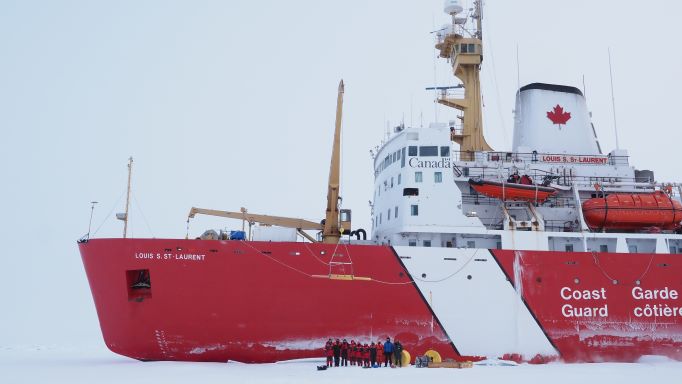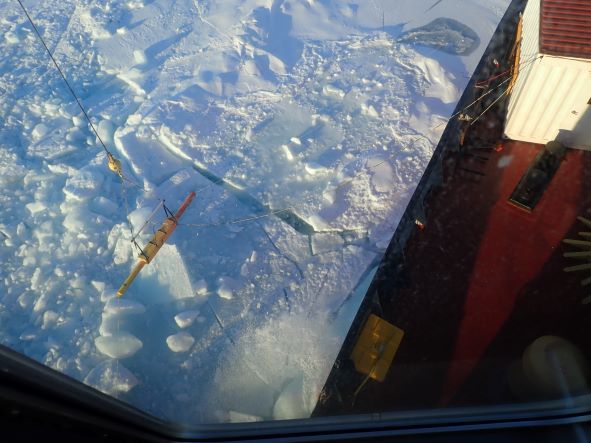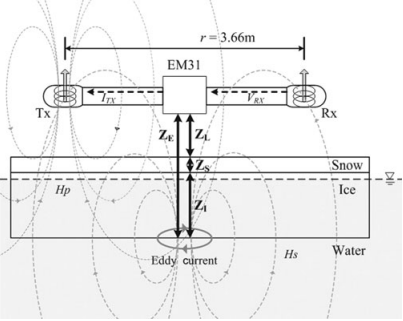Dispatch 24: Ice Ice Baby
Elizabeth Bailey
October 9, 2022
Throughout the expedition, sea ice observations have been led by Kazu Tateyama and his student, Kosuke Kawamura, who are from Kitami Institute of Technology (KITMAI). While they led on-ice observations, they are also responsible for ship-based observations made both via camera and with electromagnetic–induction (EM) measurements off the side of the ship. The EM sensor allows for Kazu to collect a timeseries of snow and ice thickness for the entire duration of our scientific operations.
EM ice thickness sensors work by producing a magnetic field in one end of the instrument. This induces a small eddy current in the water beneath the sensor. Since ice and snow do not conduct well, the eddy current dissipates exponentially where the water meets the ice bottom. In the center of the instrument is an altimeter which measures the distance from the EM sensor to the ice surface (or snow if it is present). From there, snow/ice thickness can be inferred. Since the conductivity of snow and ice are roughly the same, the EM sensor cannot directly measure how much snow or ice there is – only the thickness of the entire layer.
EM sensors were first developed in the 1980s by the Cold Regions Research and Engineering Laboratory (CRREL), then also later by Kovacs Enterprise. While this technology has existed since the 1980s, it wasn’t until recently that these instruments have become a staple on icebreakers used for research with many more institutions using these sensors for snow plus ice thickness measurements. Other icebreakers that also have EM sensors include Germany’s Polarstern, the USCGC Healy, and many more. Kazu has maintained EM measurements on the Louis since 2009 and plans to continue to do so in the future – establishing over a decade of high-resolution ice thickness! These records have helped scientist understand many physical processes that influence sea ice thickness. For example, anomalously thick sea ice in certain parts of the Antarctic Ocean is a result of converging northerly winds – research that was guided by observations from EM sensors!
In other news, we deployed our final mooring (BGOS mooring D located near 74N, 140W) this afternoon and will complete the last of our CTD stations through the night tonight and tomorrow afternoon. After that, we’ll begin our journey back to Kugluktuk where we will disembark from the ship. It’ll be an exciting final day of science on the Louis!



